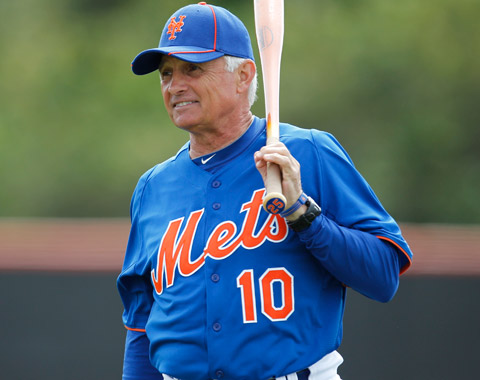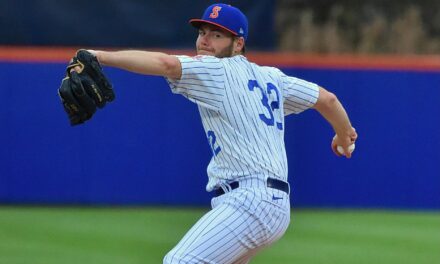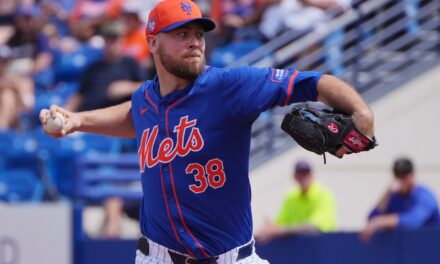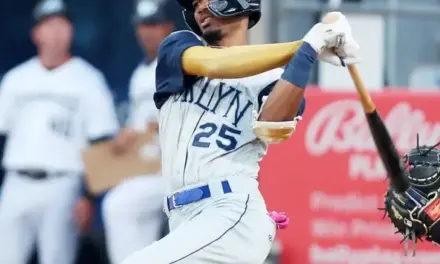The New York Mets ended up winning 74 games during the 2012 season. Their Cy Young winner R.A. Dickey was traded and their most productive outfielder, Scott Hairston, has departed as well.
The farm system may be in much better shape, and their projected 2014 payroll will be in the bottom of the majors for now – potentially opening a lot of financial flexibility going forward. However, is doom and gloom in store for the 2013 edition of the Mets? Or can they win the WAR?
While I´ll acknowledge that Wins Above Replacement is a somewhat flawed method of measuring talent – especially considering the flaws of defensive stats in this metric – it is still a sound way to judge a team overall.
So, the question is, what kind of an impact have this offseason’s transactions had on the team’s WAR compared to 2012? And how will it evolve in 2013?
Let’s examine the situation, and for those of you wondering, I’ll be using Baseball Reference’s version of WAR to conduct my analysis.
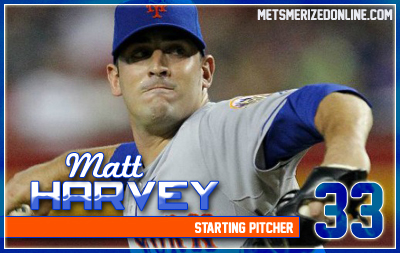
2013 Rotation: Net Gain 0.5 WAR
RA Dickey and his 5.6 WAR is gone, as are Chris Young (0.7 WAR) and Mike Pelfrey (0.9 WAR). In all likelihood, Chris Schwinden and his -0.6 WAR won´t return either. So, overall, 6.6 in WAR have to be made up and accounted for – a daunting task indeed.
Newly acquired Shaun Marcum posted a 1.3 WAR in 2012 and a 2.9 WAR in 2011. Splitting the difference, let´s assume his 2013 WAR will 2.1 as one member of this rotation.
The rest will have to be made up in-house.
Matt Harvey posted a strong 1.6 WAR in one third of a season. Since I very much believe in him, let´s assume he doubles his 2012 totals (tripling it would seem a bit outlandish). So, there´s a 3.2 WAR and thus a gain of 1.6.
Jonathon Niese had a 3.2 WAR in 2012. Let´s assume he matches that again this season and doesn´t take a step forward. Thus,.no change.
Dillon Gee posted a 0.8 WAR in 2012 while missing almost half the season. Let´s say he´s 100% back and almost doubles his previous total to a 1.5 WAR in 2013.
That leaves Johan Santana and his 0.1 WAR for 2012.
Santana’s WAR through June would was closer to 2.0 prior to his collapse over his final ten outings of the season. Let´s assume, he pitches to a modest 1.0 WAR for half the season and then gets replaced by Zack Wheeler for the other half who does half as well as Matt Harvey did in his debut. Overall, we can expect a 1.8 WAR from both of them combined.
Finally, we have Collin McHugh who made a few starts and posted a -0.9 WAR in 2012, thanks to a couple of atrocious outings late in the year while due to fatigue. Let´s assume he performs at a 0.0 replacement level.
Taking all of that conservatively projected data into consideration along with the historical data leads us to this conclusion.
The Mets needed to make up for the loss of 6.6 in Wins Above replacement.
When you calculate Marcum’s 2.1 WAR, plus the net gains of Harvey (1.6 WAR), Gee (0.8 WAR), the 1.7 WAR we could get from the Santana and Wheeler combination, and McHugh (0.9 WAR), it results in a total net gain of 7.1 in WAR.
So, overall, the rotation gains half a win vs. 2012.

2013 Bullpen: Net Gain 4.5 WAR
The Mets had one of the worst bullpens in the league in 2012.
Frank Francisco – in an injury riddled season posted a – 0.7 WAR and now seems DL bound for an extended period of time. Jon Rauch, Ramon Ramirez and Tim Byrdak (due to injury) are all gone from the 2012 cast and overall they combined for a 0.0 WAR last season. Manny Acosta and his -1.2 WAR is headed to Japan. Miguel Batista and his -0.2 WAR will write his poems for the Braves in 2013.
Meanwhile, the Mets have brought in Brandon Lyon (1.2 WAR in 2012), RH Scott Atchison (1.7 WAR in 2012), Pedro Feliciano (0.0 due to missing the season), Aaron Laffey ( 0.2 WAR) and LaTroy Hawkins (- 0.1 WAR). I´ll assume only Lyon, Atchison and Feliciano land a spot and replace Rauch – Ramirez – Byrdak. Conservative as I am, I´ll pencil in Lyon & Atchison for half as good a season and Feliciano as neutral. Gain: 1.5
Acosta is replaced in-house by either Jeurys Familia or Greg Burke. Since I like the latter ones quite a bit, I´ll project them as a +0.8 WAR reliever combined. Gain: 2.0
Finally, Josh Edgin posted a – 0.1 WAR in 2012 in his brief debut. Blessed with a power arm, he does modestly decent and finishes with a 0.4 WAR overall. Gain: 0.5
FF returns at some point and remains a disappointment. But instead of – 0.7, only is a – 0.2 reliever in 2013. Gain: 0.5
Parnell repeats his 2012 season as the new Mets closer.
Adding everything up, the bullpen turns from atrocious to a solid average. Yet, an overall gain of 4.5 Wins.
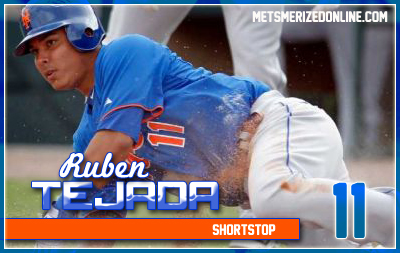
2013 Infield: Net Gain 3.5 Wins
Most of the 2012 Infield is back. David Wright – Ruben Tejada – Daniel Murphy – Ike Davis combined for a 10.5 WAR in 2012 – in spite of Murphy learning a new position, Ike being limited by valley fewer, Tejada missing an extended stretch of time, and Wright being almost unprotected in the lineup most of the season.
The average age of the four regular infielders entering 2013 is 26.5 and thus pretty close to the prime years for a baseball player. Let´s assume Wright regresses slightly from 6.7 to 4.5, however Tejada improves from 1.9 to 2.5 over a full season, Murphy´s defensive improvements over the 2nd half of the season last to bring his WAR up from 1.2 to 2.0 while Ike finally has the break-out we´ve all been expecting and plays defense like in 2011 and 2010 to post a 3.0 WAR vs. 0.7 in 2012. Overall, that´s a gain of 1.5 Wins from these 4 players.
The backup infielder Cedeno (+ 0.3) is replaced by Hicks (-0.1) or Quintanilla (+0.5). Splitting the difference, this remains unchanged.
At Catcher, Josh Thole (- 0.1) gets replaced by John Buck (0.4 WAR in 2012) for a gain of half a win.
Backups Mike Nickeas (-0.7) and Rob Johnson (-0.2) are replaced by Anthony Recker (0 WAR in 2012) and Rookie Travis D´Arnaud. Being very conservative, I´ll give the latter two a combined 2013 WAR of merely + 0.6. Still, overall, that´s a 1.5 WIN gain vs. the terrible 2012 backup combo.
Adding things up, the catching improves by 2 Wins, the Infield by 1.5 wins for a total of + 3.5 wins.
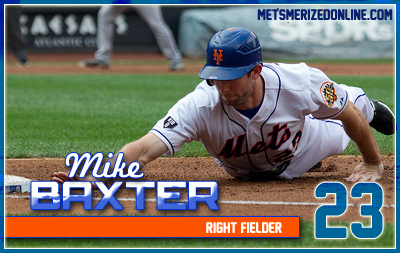
2013 Outfield: Net Gain 3.0 Wins
Ah, the outfield. A collection of rejects and suspects that has lost Scott Hairston (+ 1.5) and Andres Torres (+ 1.2) and Jason Bay (- 1.3 WAR in 2012). Total loss: 1.4 WAR.
Among newcomers, Collin Cowgill (+ 0.3 in limited action in 2012) figures to double his AB for a total WAR of + 0.6. Marlon Byrd (- 0.5 in 2012 but 1.7 in 2011) and Andrew Brown (-0.1) are competing for a spot. Let´s assume, overall they post a 0.4 WAR, so the new guys combine for 1.0 WAR.
That leaves things up to returnees.
Lucas Duda combined disappointing offense and horrible defense in RF for a – 1.4 WAR in 2012. With an easier assignment in LF and a better offensive approach, he emerges as a modestly solid player to post a 0.6 WAR – for a 2 WAR gain overall.
Kirk Nieuwenhuis had his ups & downs and finished with a 0 WAR in 2012. At age 25, he´s poised for modest improvements and an expected WAR of a conservative 1.4 – which is still below average for a CF but certainly realistic.
Finally, Mike Baxter and his 0.3 returns to RF. He probably is what he is and remains unchanged.
Still doing the math, the outfield gains 3.0 Wins overall and “improves” from atrocious to well below average in 2013.
Overall Net Gain 11.5 Wins
Now of course, it only February 26 and a couple of the players here may change for a myriad of reasons as Spring Training battles are waged in St. Lucie, but we have a good case here to believe the Mets as currently constructed can out produce what they did in 2012. Even with the key losses of R.A. Dickey and Scott Hairston.
All included, the 2013 Mets gain 11.5 wins vs. their 2012 counterparts. Please note that these projections do not include monster-breakouts for anyone. Just gradual improvements which you´d expect for generally young players and no crippling injuries.
Adding 11.5 wins to a total of 74 wins in 2012, you get to 85.5 wins. Not good enough to beat the Nationals for the division and probably behind the Braves as well. But certainly good enough to challenge the Phillies for 3rd place in the NL East and thus compete for the second Wild Card in the NL. And if players such as D´Arnaud, Wheeler, Ike or Duda really happen to break out in a big way, there´s upside for an even higher total. But let´s stop dreaming and “only” look at a glass that could be a lot closer to “half full” than people realize.

